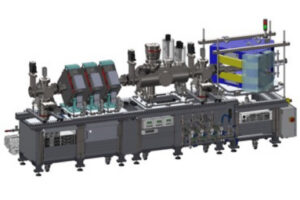Since 2019, a new transmission line (Figure 1) has been acquired as part of the FISIC project. It has been connected to the SIMPA source to test its operation and performance.
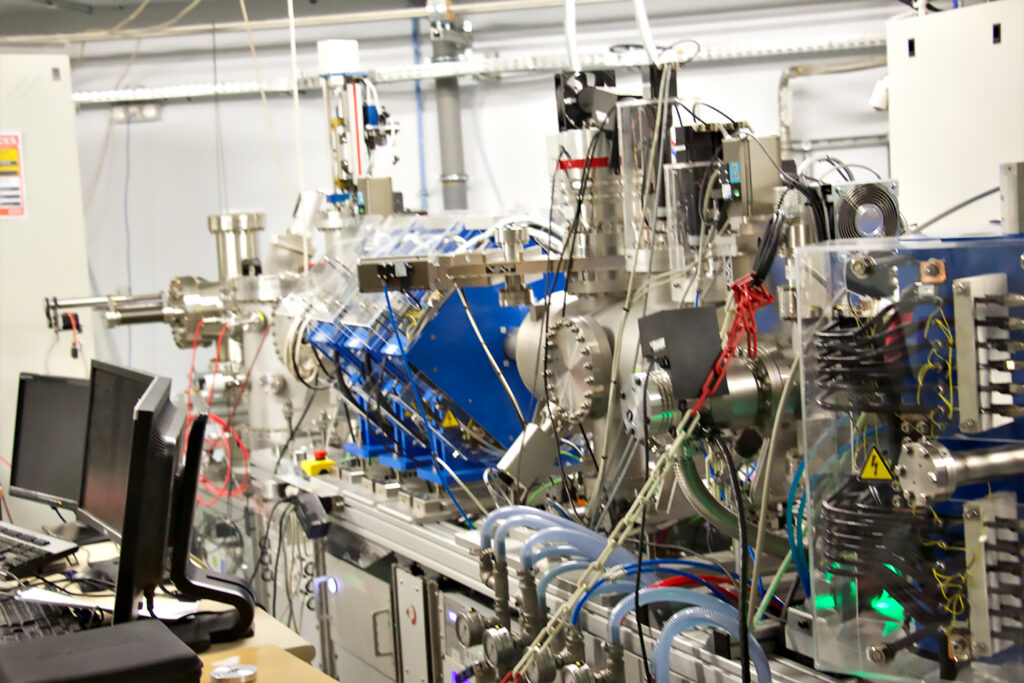
Caption: FISIC line installed in the SIMPA room. © INSP – Cécile Duflot
Figure 1 : Diagram showing the different elements of the FISIC line
The line consists of a magnetic dipole with a radius of 400 mm at 90°, followed by a diagnostic chamber for the selected ion beam in q/m. This chamber includes an electric current measurement in a Faraday cup, single wire profilers in the X and Y planes and a set of beam reduction slits in X and Y. Each of these elements is motorized. Thus in addition to the current, a measurement of the beam emittance is possible.
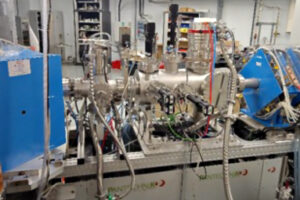
Caption: Diagnostic chamber. © INSP
A triplet of magnetic Quadupoles incoporating two steerers follows this chamber to adjust the shape of the beam and its trajectory.
The frames are made of welded steel. The components of commands and controls, the power supplies of the electromagnets are included in this frame. The piloting and control is done via a PC and a Labview application developed by Pantechnik.
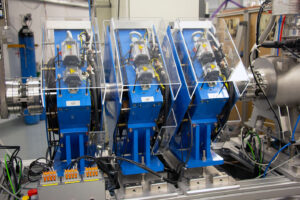
Caption: Magnetic quadrupoles. © INSP – Cécile Duflot
Located after the quadrupoles, a retractable “racket” profiler developed by GANIL has been installed. It consists of two sets of 47 crossed horizontal and vertical tungsten wires of 20 micrometers in diameter. The extracted electrons induce a current in each wire which is proportional to the number of intercepted particles. It allows to control the distribution and the position of the beam at the end of the line. The signals are then visualized on a PC via the associated electronics.
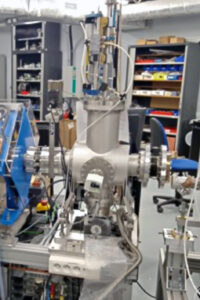
Caption: Profiler in its vacuum chamber. © INSP
This beam line will be connected to a new ion source currently being acquired. The two sources and associated lines will allow the study of ion-ion interactions in the so-called low speed regime.


